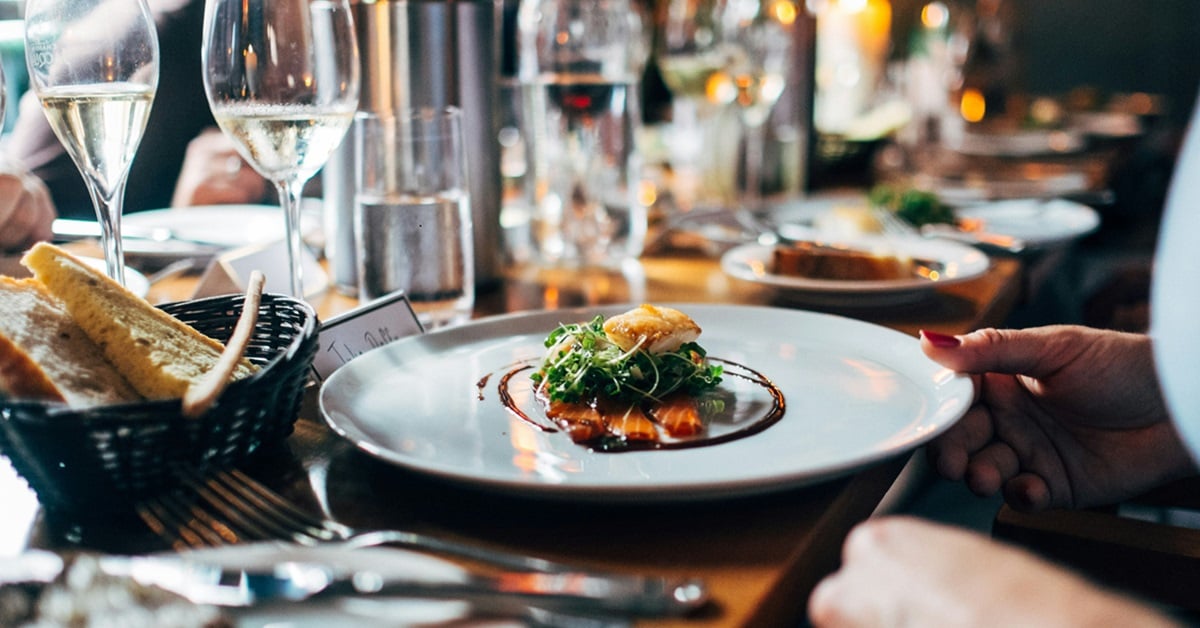Cash flow is critical for the success of any business. Understanding whether more cash is flowing in or out of your business is essential for making the right decisions for your venue.
In this complete guide, we'll discuss the elements of cash flow for restaurants. We will also provide some top cash flow management tips to keep your restaurant on the right track.
What is Cash Flow?
Cash flow refers to the net amount of cash moving in and out of a business over a given time period. If your restaurant has more cash coming in than it is spending, you have a positive cash flow. If you are spending more cash than is entering the business, you have a negative cash flow.
How to Calculate Your Restaurant’s Cash Flow
Understanding your restaurant's cash flow involves creating a cash flow statement and subtracting cash outflow from cash inflow over a given time frame. This is a critical piece of information for the financial health of your venue.
Cash Inflow
Cash inflow is cash coming into your business. For a restaurant, cash inflow typically comes from sales income and external financing.
Other forms of cash inflow can include money owed to your business being paid off. For example, if your venue hosts a large corporate event, it might be paid for in the form of a payment plan. This means cash can continue to flow into your business for a period after the event is held.
For more information on external financing for restaurants, check out our complete guide to the best loans for restaurants.
Cash Outflow
Cash outflow is cash that your business is spending. Cash outflow comes in many more forms compared to cash inflows, including:
- Purchasing inventory and equipment
- Rent and utility bills
- Employee wages
- Food costs
Why is it Important to Maintain Your Restaurant’s Cash Flow?
Unless your restaurant business is pursuing a particular financial strategy, it is best to maintain a consistent, positive cash flow. If you are consistently operating with negative cash flow, your venue can cease to be sustainable.
As an important marker of financial health, cash flow is also an important metric for securing investment in your venue. A positive cash flow increases the chances that backers will see your restaurant as worthy of investment.
6 Strategies to Ensure Restaurants Maintain Cash Flow
We've assembled 6 strategies your business can use to maintain stronger cash flow performance.
1. Analyse Your Profit and Loss Statement (P&L)
A profit and loss statement is a document that lists your business' sales and expenses. While this does not cover the full extent of your cash flow, sales and expenses are two crucial aspects in this area.
This is because sales are typically the most important cash inflows for businesses, and expenses are the most important cash outflows. Before delving into a deeper financial analysis of your business, your P&L statement can typically give you a strong perspective of your venue's cash flow.
However, since profit and loss are not the same as cash flow, it's important to go deeper into your restaurant's finances for a complete picture.
2. Increase Sales
The most sustainable way to increase cash inflow is to increase sales in your venue. Here are a few of the best tips for doing just that:
- Marketing: In a competitive restaurant market like Australia or New Zealand, marketing is critical. A multi-channel approach including email marketing, social media and search engine optimisation is the best way to get the word out about your venue.
- Upsells: Upselling is an excellent technique for increasing the average order per customer. Train your staff to have a strong understanding of your menu, and offer free samples to get upsells over the line.
- Online ordering: Customers love the flexibility of online ordering. To maximise the success of online ordering in your restaurant, optimise your menu for delivery and ensure your restaurant has a strong, recognisable brand.
For further information, check out our guides to increasing sales in restaurants and cafes.
3. Decrease Operational Expenses
While cash flow strategies often focus on increasing cash inflow, reducing cash outflow is also an important part of your strategy.
Fortunately, there are plenty of ways for your business to decrease operational expenses, including:
- Efficient rostering: There's nothing worse than having staff standing around with nothing to do. Upgrade your rosters with innovations like rotating rosters to reduce your staffing costs.
- Reduce food costs: To prevent your food costs from ballooning, perform frequent inventory checks to avoid overbuying. Carefully analyse your portion sizes to ensure food is not being wasted.
- Renegotiation: From your utility costs to inventory to rental fees, consider regularly renegotiating the ongoing costs of your restaurant and ensure you are getting the best possible deals.
4. Conduct a Cash Flow Forecast
A cash flow forecast is a process by which businesses project future cash inflows and outflows to build an overall understanding of the financial health of their business.
A cash flow forecast involves the following steps:
- Forecast income and sales over a given time period (usually monthly).
- Estimate other cash inflows in that same time period, such as loan repayments or tax refunds.
- Estimate cash outflows and expenses.
- Compile the results and subtract your outflows from your inflows to get your projected cash flow for the time period.
- Review your estimated cash flows against actual cash flows. Analysing the differences can highlight problematic areas in your cash flow.
5. Create a Restaurant Balance Sheet
A balance sheet is a critical document for financial health. It breaks down a business' finances into assets, liabilities and equity.
- Assets are anything that belongs to a business that holds quantifiable value, like cash and inventory.
- Liabilities are financial obligations that mean a business owes money. Common liabilities for restaurants include payroll and rent expenses.
- Equity (or owner's equity) is the value of a business' assets minus its liabilities.
A restaurant balance sheet provides important context for your business' cash flow. While balance sheets provide a snapshot of the financial status of your restaurant, cash flow is a more fluid metric that affects how your business will perform in the future.
This context is important for decision-making in your business. For instance, if your liabilities are far greater than your assets, this means that poor cash flow can be particularly dire.
6. Open a Reliable Line of Credit
Credit can be a powerful tool for restaurant cash flow management. It is a popular form of restaurant financing due to its stability.
A business line of credit enables restaurants to access a set amount of funds. Restaurants only need to pay interest on the amount borrowed rather than the entire line of credit.
Business lines of credit are commonly available through banks and credit unions. Do plenty of research to find the right option for you.
Optimise Your Restaurant's Operation with ResDiary
Managing cash flow can be complex. However, with the right documentation and a sound strategy, venues can find simple ways to succeed.
An excellent restaurant reservation system is key to your venue's success. ResDiary offers excellent booking management and a bevy of integrations to streamline your operations.
From high-calibre EPOS integrations to marketing solutions that help boost sales, there are plenty of ways ResDiary can increase positive cash flow in your restaurant.




